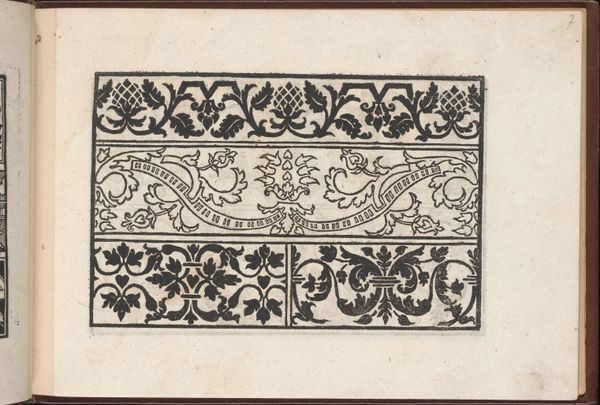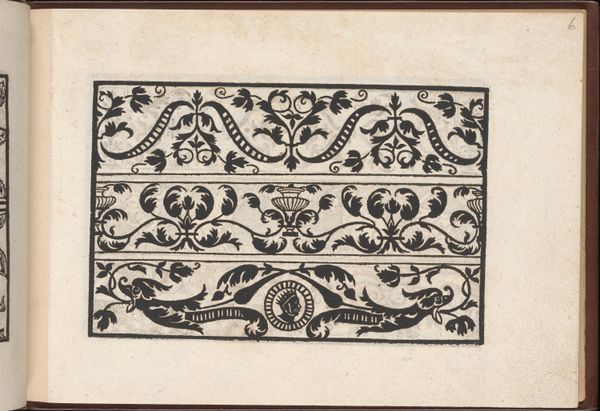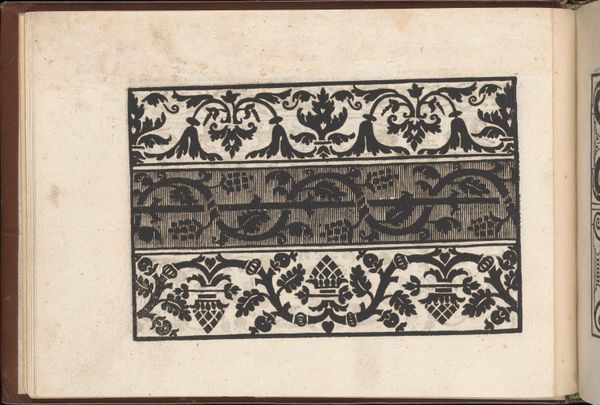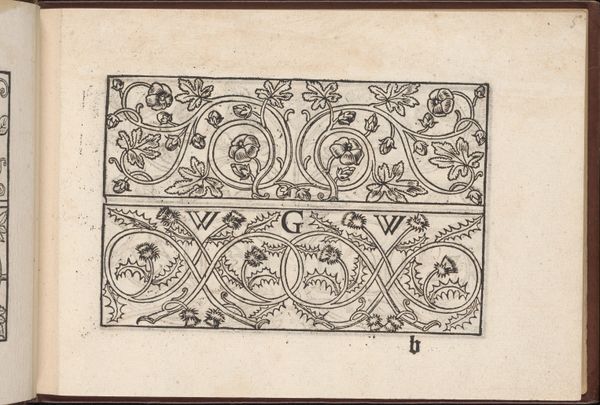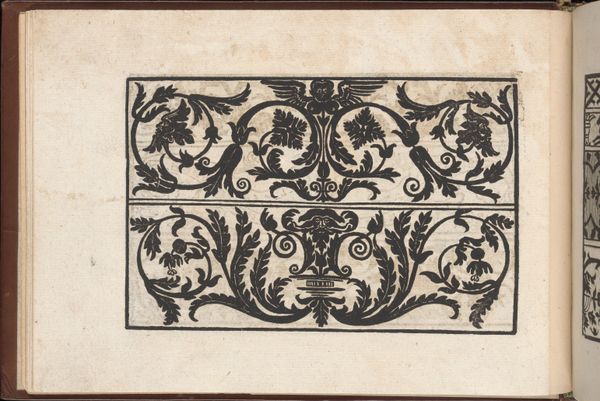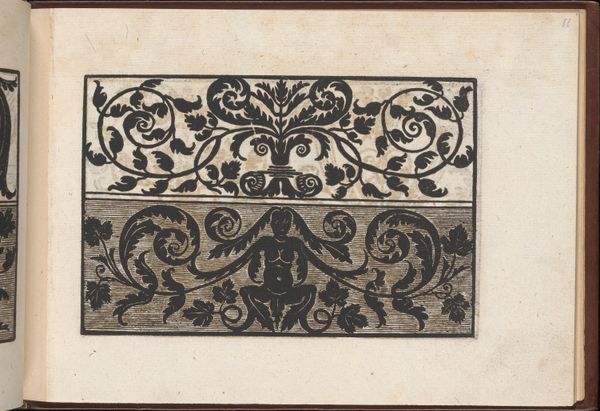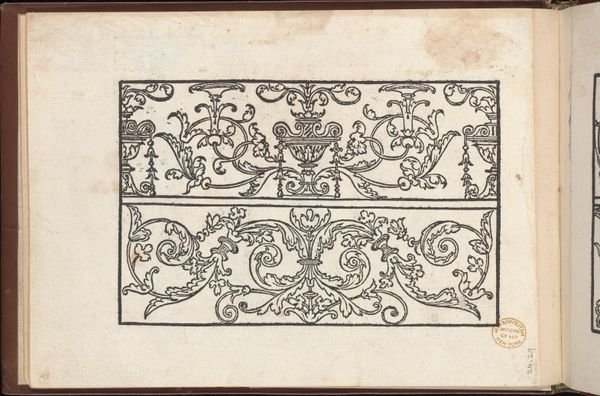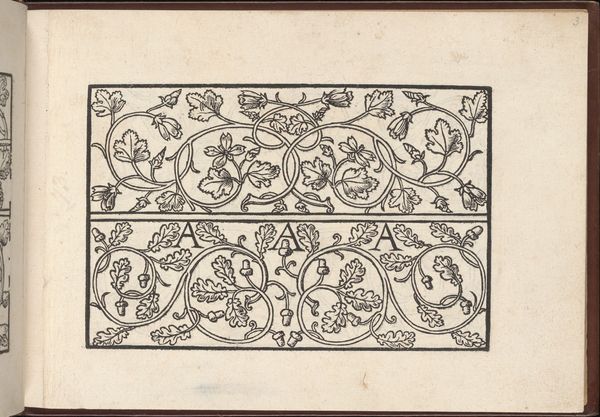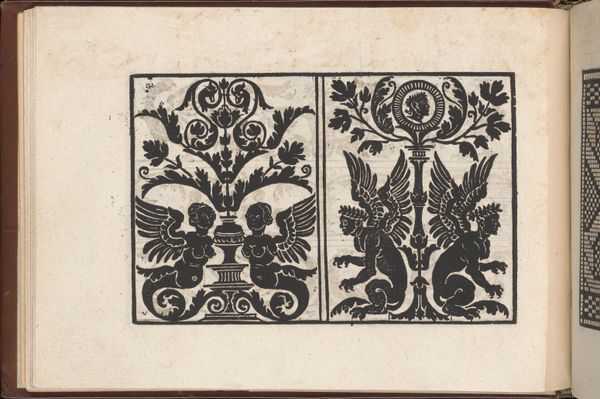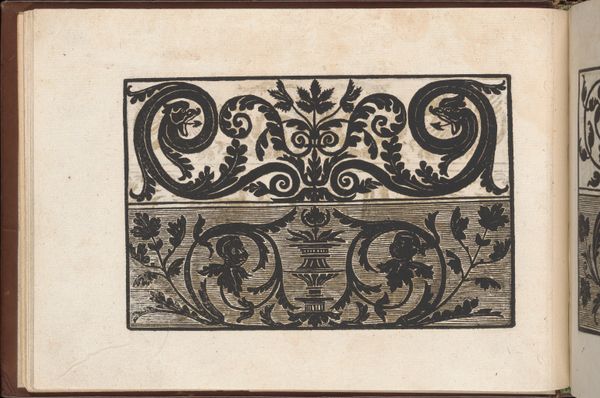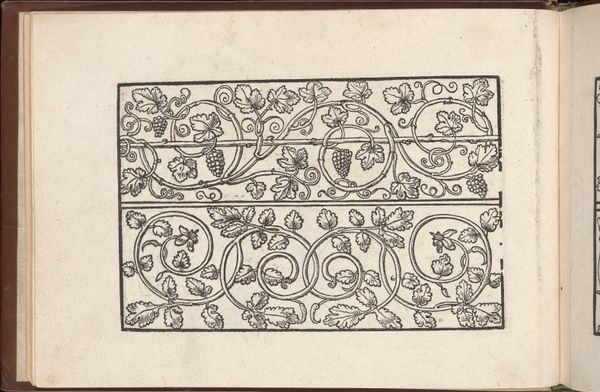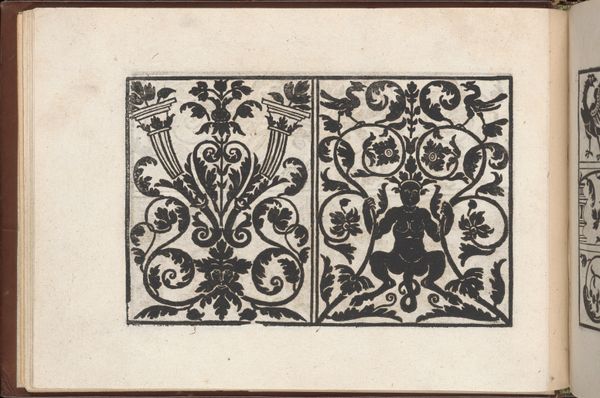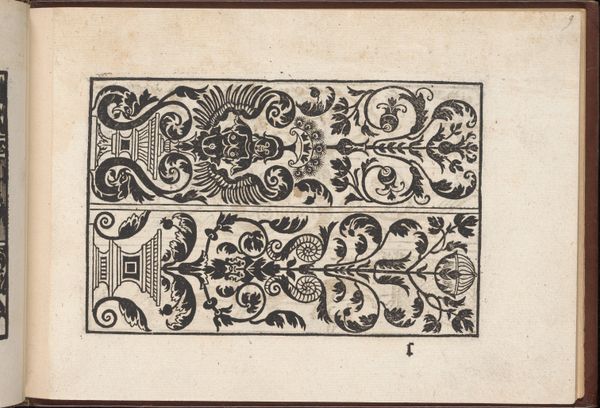
Page from Eyn Newe kunstlich moetdelboech alle kunst (Page 6v) 1532
0:00
0:00
drawing, ornament, print, paper, ink, woodcut
#
drawing
#
ornament
# print
#
paper
#
11_renaissance
#
ink
#
geometric
#
woodcut
#
northern-renaissance
Dimensions: Overall: 5 11/16 x 8 1/16 in. (14.5 x 20.5 cm)
Copyright: Public Domain
Curator: I find this woodcut print, “Page from Eyn Newe kunstlich moetdelboech alle kunst,” created around 1532 by Peter Quentel, fascinating for its intricate designs. It's currently housed in the collection of the Metropolitan Museum of Art. Editor: My first impression is one of playful austerity; there’s an intentional geometry at play, yet the imagery is surprisingly whimsical, like something from a medieval bestiary. Curator: Precisely! It’s Northern Renaissance, after all. These model books functioned as compendiums of patterns and ornamental motifs, serving as inspiration for artisans working in various crafts, such as metalwork or textiles. Editor: So, it's functional art. What does the inclusion of fantastical creatures tell us? The Unicorns flanking what appears to be a fountain feel very deliberate. Are these figures meant to signify something about this society at that time? Curator: I suspect the symbolism might delve into alchemy and mythology, unicorn as the embodiment of purity and grace. Also, take a close look at that fountain with triple spouts - that, for me, is a representation of knowledge springing forth. Editor: Knowledge perhaps only available to a certain class? Because in that case, how can such iconography have anything to say about a deeply divided population struggling against exploitation, violence, and scarcity? The rigid symmetry almost feels oppressive. Curator: That's certainly one way to view it. However, isn't the inherent value also in preservation? Peter Quentel offered a system to repeat specific stories for others. That is the beginning of empowerment through sharing symbolic tools. Editor: Perhaps, or it perpetuated established narratives while conveniently excluding other realities. Yet seeing these patterns side by side is fascinating. Curator: Yes, how visual culture helps society maintain cultural memory, even while going through tumultuous moments. It’s what allows us to feel connected to history and, more critically, to imagine continuity across human cultures and through time. Editor: Right. Ultimately, understanding context is as critical as dissecting each image, especially when grappling with works like these.
Comments
No comments
Be the first to comment and join the conversation on the ultimate creative platform.
